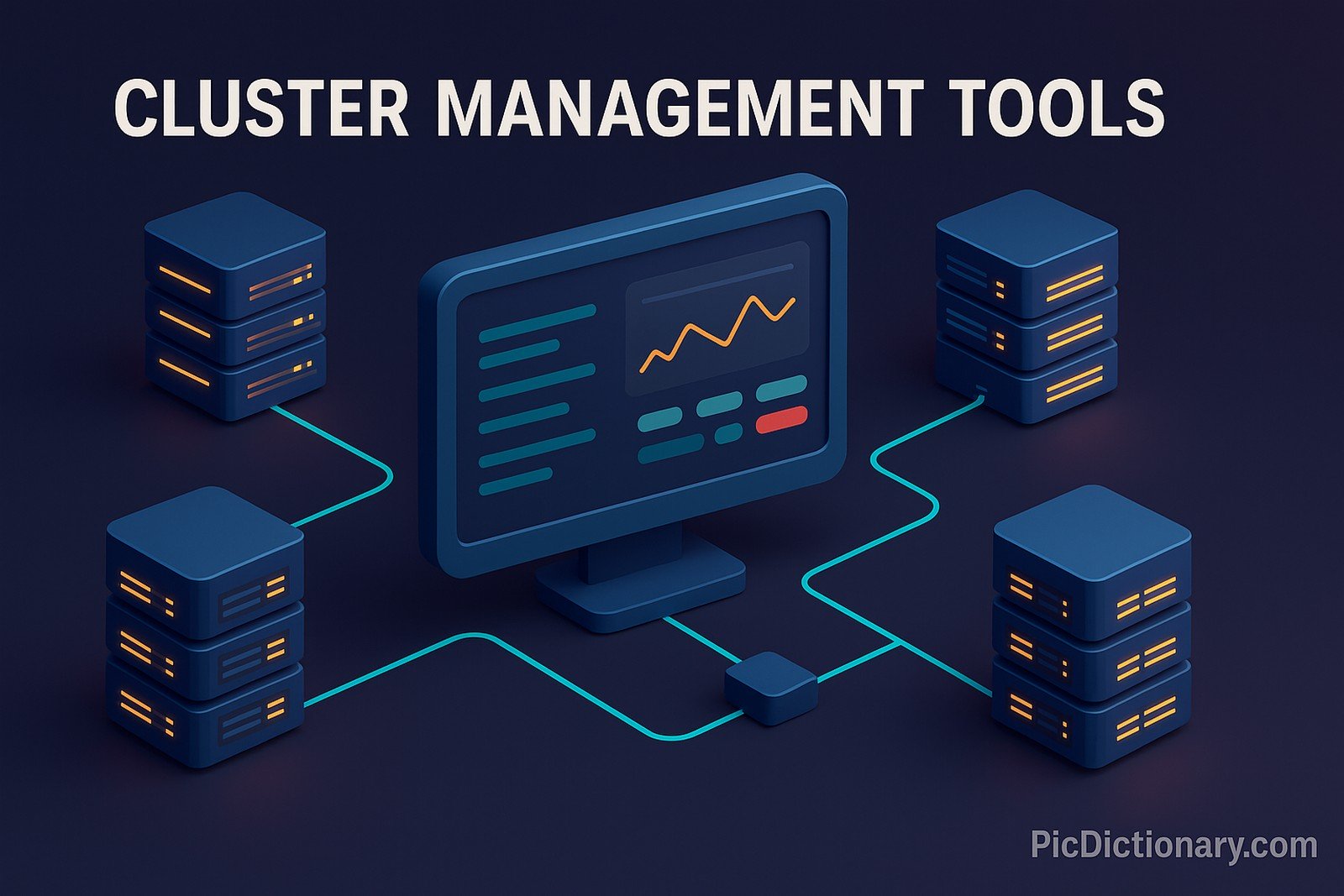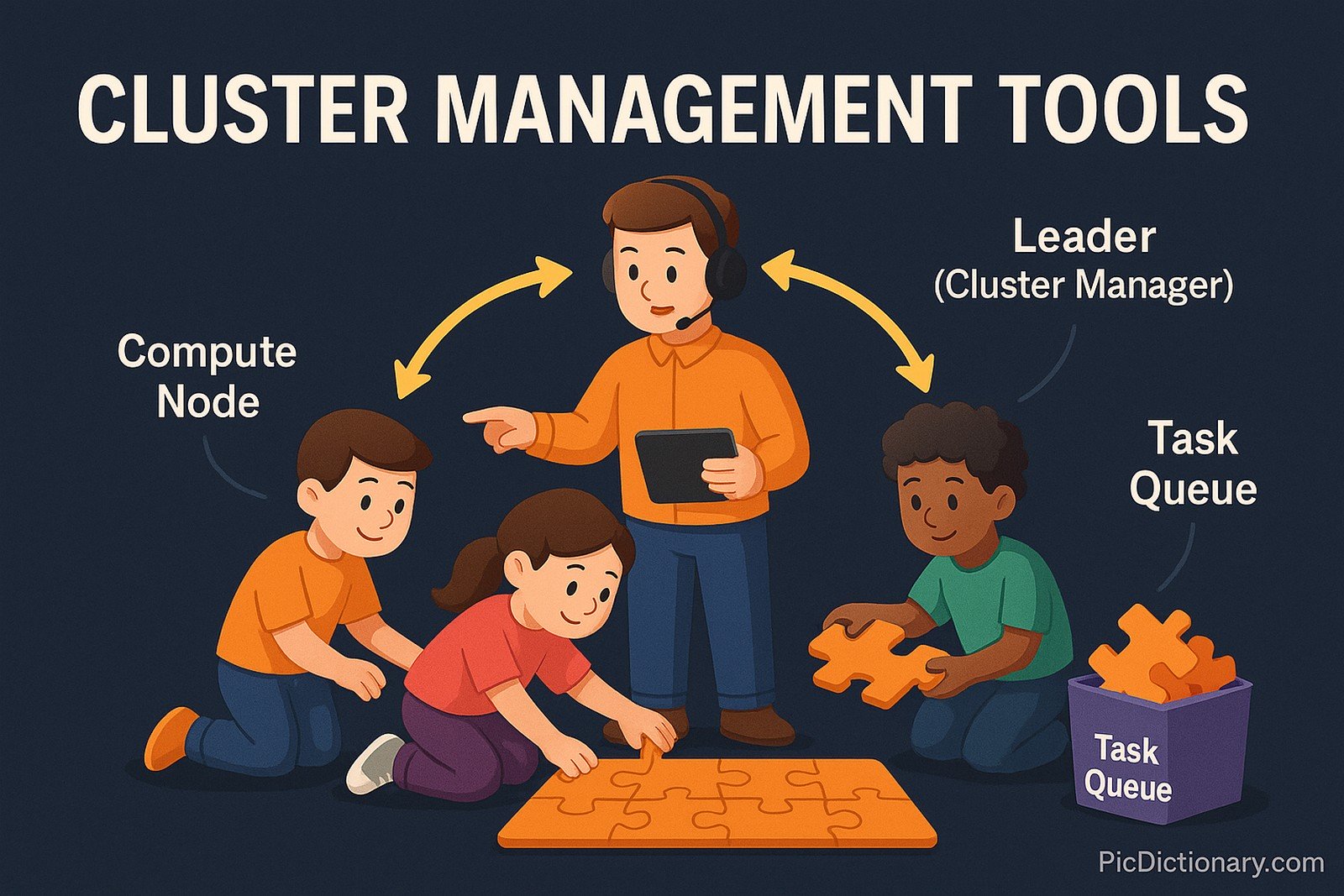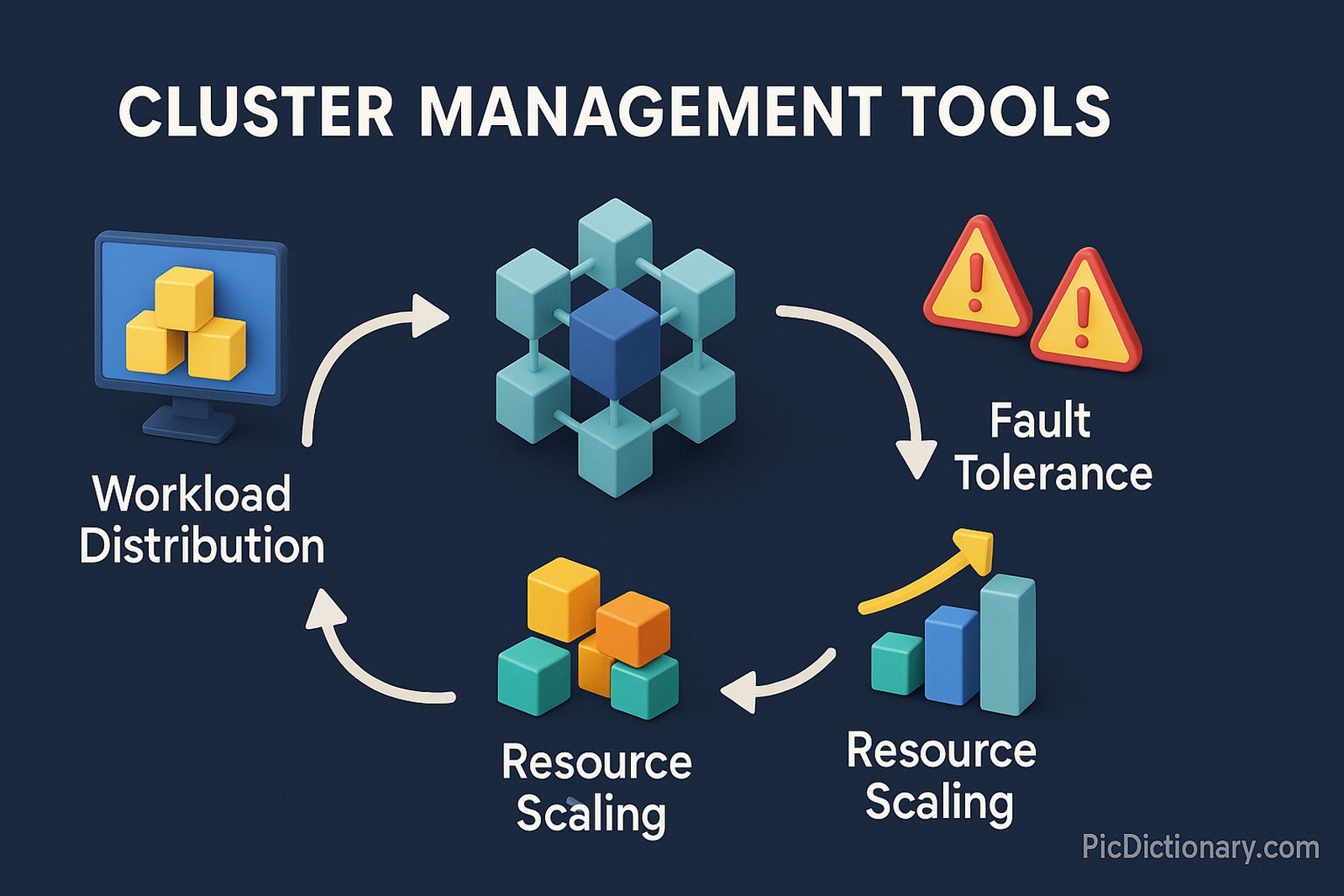Cluster Management Tools

Quick Navigation:
- Cluster Management Tools Definition
- Cluster Management Tools Explained Easy
- Cluster Management Tools Origin
- Cluster Management Tools Etymology
- Cluster Management Tools Usage Trends
- Cluster Management Tools Usage
- Cluster Management Tools Examples in Context
- Cluster Management Tools FAQ
- Cluster Management Tools Related Words
Cluster Management Tools Definition
Cluster management tools are software solutions designed to control and optimize multiple interconnected computing resources working together as a cluster. These tools facilitate workload distribution, node monitoring, fault tolerance, and resource scaling, making them essential in cloud computing, high-performance computing (HPC), and data center management. Some widely used cluster management tools include Kubernetes, Apache Mesos, and Slurm, each providing distinct features for scheduling, orchestration, and resource balancing.
Cluster Management Tools Explained Easy
Imagine you have a group of friends working together on a big puzzle. Some friends put pieces together, while others look for missing ones. A leader ensures everyone works efficiently and no one gets stuck. Cluster management tools act like that leader, making sure computers in a group (cluster) work together smoothly without wasting time or resources.
Cluster Management Tools Origin
The origins of cluster management tools can be traced back to the 1990s when distributed computing and parallel processing became mainstream. Early supercomputing systems required manual resource allocation and monitoring, leading to the development of automated scheduling and resource management software. With the rise of cloud computing in the 2000s, modern cluster management tools emerged to handle containerized applications, large-scale workloads, and cloud-native infrastructure.
Cluster Management Tools Etymology
The term "cluster management tools" derives from "cluster," meaning a group of interconnected elements, and "management tools," which refers to software designed to organize, monitor, and optimize these elements.
Cluster Management Tools Usage Trends
The adoption of cluster management tools has skyrocketed with the growth of cloud computing, big data analytics, and artificial intelligence. Kubernetes, for instance, has become the de facto standard for container orchestration, while Apache Mesos and Slurm are widely used in data-intensive industries like scientific research and financial modeling. Organizations favor these tools to automate workload scheduling, enhance system resilience, and optimize cost efficiency.
Cluster Management Tools Usage
- Formal/Technical Tagging:
- Cloud Computing
- High-Performance Computing
- Container Orchestration - Typical Collocations:
- "Kubernetes cluster management"
- "automated resource scheduling"
- "fault-tolerant cluster management"
- "cloud-native cluster monitoring"
Cluster Management Tools Examples in Context
- A cloud provider uses Kubernetes to manage thousands of containers across multiple data centers.
- Research institutions deploy Slurm to distribute computing tasks efficiently across high-performance computing clusters.
- E-commerce companies use Apache Mesos to handle dynamic workloads during peak shopping seasons.
Cluster Management Tools FAQ
- What are cluster management tools?
Cluster management tools are software solutions that automate and optimize the operation of multiple interconnected computing resources in a cluster. - Why are cluster management tools important?
They improve resource utilization, ensure high availability, and enable efficient workload scheduling, making them critical for cloud computing and high-performance computing. - What are some popular cluster management tools?
Kubernetes, Apache Mesos, and Slurm are among the most widely used cluster management solutions. - How do cluster management tools benefit cloud computing?
They provide automated scaling, fault tolerance, and workload distribution, ensuring optimal cloud resource usage. - What industries rely on cluster management tools?
Industries such as cloud computing, scientific research, financial modeling, and e-commerce depend on these tools for efficient resource management. - How does Kubernetes differ from other cluster management tools?
Kubernetes specializes in container orchestration, while tools like Apache Mesos and Slurm focus on broader resource scheduling for various computing workloads. - Can small businesses use cluster management tools?
Yes, many cloud providers offer managed services, allowing small businesses to leverage cluster management tools without complex infrastructure. - Do cluster management tools require programming knowledge?
Basic scripting and infrastructure management skills are helpful, but many tools provide user-friendly dashboards and automation features. - Are cluster management tools open-source?
Many cluster management tools, such as Kubernetes and Apache Mesos, are open-source, enabling customization and community-driven enhancements. - How do cluster management tools support AI and machine learning?
They facilitate distributed computing, enabling faster training of machine learning models across multiple nodes.

Cluster Management Tools Related Words
- Categories/Topics:
- Cloud Infrastructure
- Distributed Computing
- Resource Scheduling
Did you know?
Google initially developed Kubernetes as an internal tool called Borg to manage its massive cloud infrastructure. It later released Kubernetes as an open-source project in 2014, revolutionizing container orchestration for enterprises worldwide.
PicDictionary.com is an online dictionary in pictures. If you have questions or suggestions, please reach out to us on WhatsApp or Twitter.Authors | Arjun Vishnu | @ArjunAndVishnu

I am Vishnu. I like AI, Linux, Single Board Computers, and Cloud Computing. I create the web & video content, and I also write for popular websites.
My younger brother, Arjun handles image & video editing. Together, we run a YouTube Channel that's focused on reviewing gadgets and explaining technology.



Comments powered by CComment